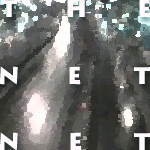Stephen Sass is a professor of materials science at Cornell University who, desperate to hold onto a drowsy class one day, started lecturing about the social implications of materials. Once they realized, he tells the reader, that a world without steel would be bereft of Corvettes, they really got interested in the development of materials. Sass's book, The Substance of Civilization, extends that line of thought, exploring the Ages -- already named for their dominant or significant materials -- by the development and use of those materials. This friendly, accessible book is determined not to be a textbook, and it does succeed in that, but perhaps it leans away from science at the expense of clarity.
Sass argues that "history is an alloy of all the materials we have discovered, invented, transformed, and manipulated...." While the thesis is neither controversial nor new, Sass's wandering students remind us that materials are prone to be thought the wallflowers of history rather than its stars, and Sass reminds us how remarkable it is that people, often by trial and error, discovered such elaborate techniques for extracting and working metals. The need or desire for new materials, of course, has also helped to drive such scientific pursuits as chemistry, which has in turn yielded yet more powerful techniques for developing materials.
Sass has ranged his subjects in chronological order, tracing the use of materials by humans from the Stone Age exploitation of found objects to the modern manipulations of elements chosen specifically for their physical and chemical properties. The social information is diverse and always interesting, from speculations about how the first human discovered there was copper in malachite, to brief descriptions of the impact of particular materials, such as steel and platinum, on the development of society.
Sass goes further to discuss the limitations that face future technologies and to introduce the lay reader to the rising Age of Composites, materials that can revolutionize the flights speeds of planes, the gas mileage of cars, the strengths of support materials, and the adhesions of glues. And on a lighter note, the combination of chronological and social information can give the player of Civilization II context about advances -- making it easy and entertaining to gauge whether your civilization is "on time".
Unfortunately, Sass's eminently pleasant book suffers from some unhelpful editing choices. The ragged edges of the pages in the small (and pretty) volume make flipping through difficult, and there is no index (although the short chapters, devoted generally to a single material) are fairly easy to scan. The book is basically accessible, but it is still written to a fair level of complexity, and it would benefit from more illustrations and diagrams than it has. Such illustrations as are present are contained in black and white, central plates, and they appear in a different order from that of their discussion in the text. Oddly, the plates are not referred to in the text, even for technical descriptions such as "face-centered cube" for structures of materials. In a book that strove to reach the lay reader, it's hard to understand why the diagrams weren't incorporated into the text pages, perhaps allowing color plates to show more details of the variety of materials under discussion.
The Substance of Civilization is informative and appealing, but it's truly disappointing to see an interesting book so limited by its design and structure. Perhaps the creators of this volume worked a bit too hard to integrate other disciplines and priorities into this book which is, after all, about science and technology. Nevertheless, numerous intriguing stories about Roman cement, ancient South American platinum, and the vagaries of materials throughout the ages are to be found in this book.
Another book that explores materials science is Biomimicry, by Janine Benyus. Plastics are touched on in The Substance of Civilization, and they are treated more extensively in Stephen Fenichell's Plastic: The Making of a Synthetic Century, also reviewed in The Net Net.



